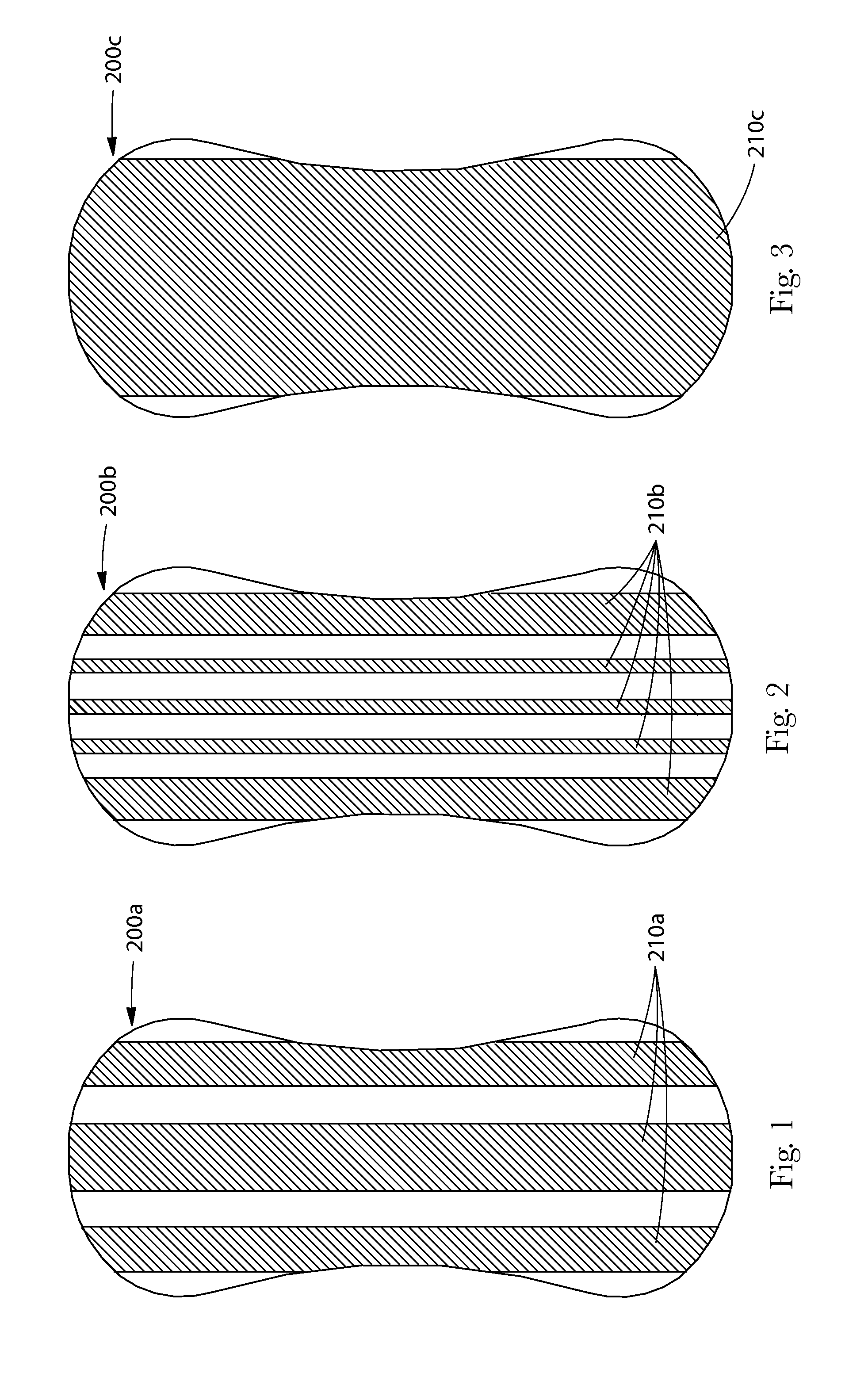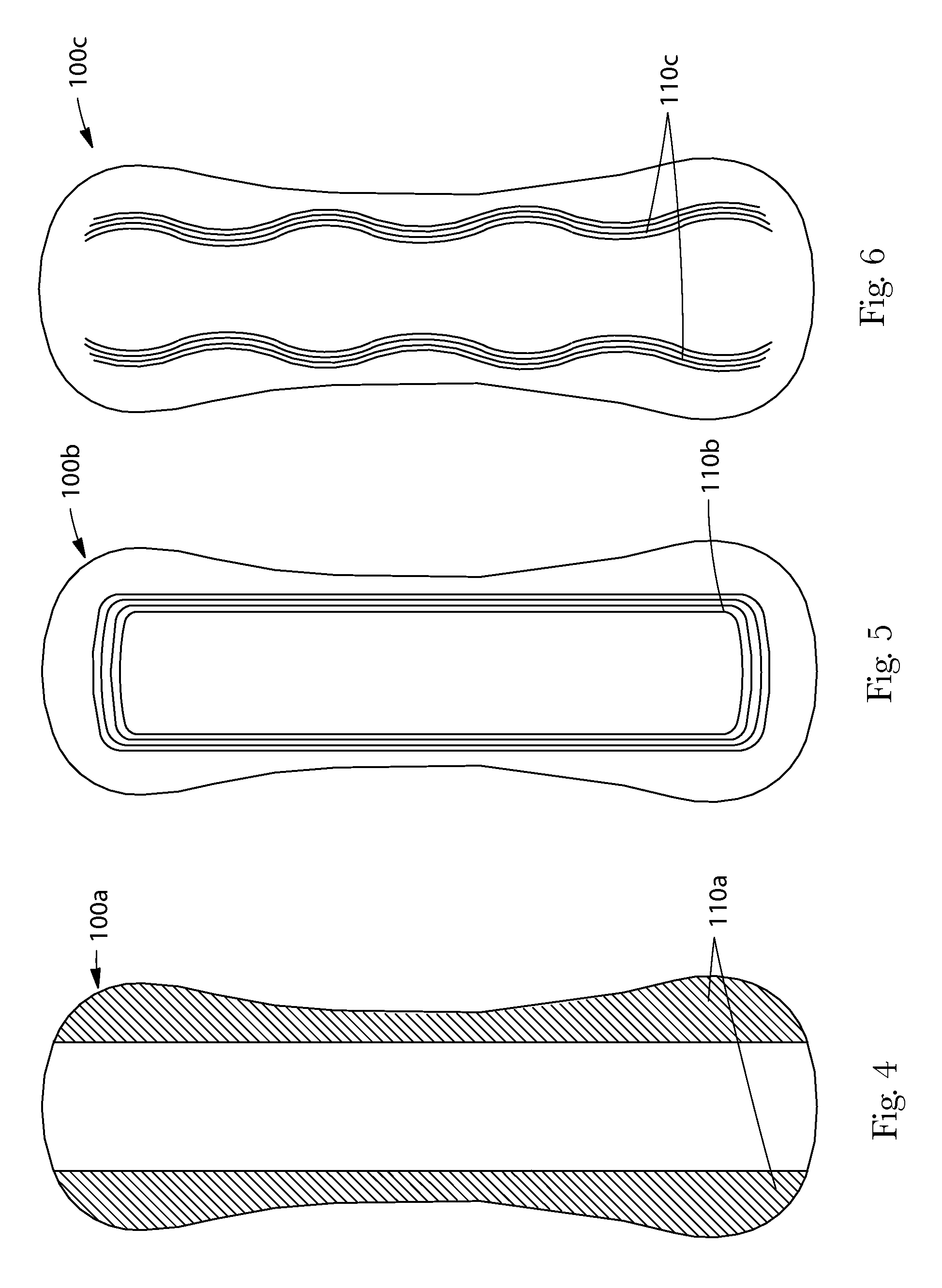Method of producing color change in a substrate
a substrate and color technology, applied in the field of activation colorants, can solve the problems of inability to easily adapt the order in which manufacturers have chosen to provide for colored regions, and equipment can represent a significant capital cost to manufacturing,
- Summary
- Abstract
- Description
- Claims
- Application Information
AI Technical Summary
Benefits of technology
Problems solved by technology
Method used
Image
Examples
example 1
Impact of Pre-Heating Step on Color After UV Activation
[0166]A spunbond nonwoven fabric was prepared comprising polypropylene and 1 weight percent Datalase Colour Change Pigment LT (from Datalase Ltd., Widnes, UK). Basis weight of the nonwoven is 28 grams per square meter. As made, the nonwoven is white.
[0167]Handsheets of this material were exposed to ultraviolet light in a Chromato-Vue C-75 UV darkroom cabinet set to 254 nm with an exposure time of 1 minute. The fabric turned a pale blue color. A second set of handsheets were passed through a laminator set to a temperature of 255° F. to uniformly heat the material. The handsheets were subsequently exposed to ultraviolet light under the same conditions as described above. The fabrics turned a darker shade of blue than the first set of materials. Color measurements, ΔC and ΔE values are provided in Table 1. The sample that had been pre-heated prior to UV activation has a significantly darker shade than the sample that underwent UV a...
example 2
Patterned Preheating Via Heated Nip and Masking
[0168]The same nonwoven as described in Example 1 was masked with a pattern of joining circles laser cut into a piece of paper. The nonwoven and paper were run together through a heated nip (laminator) at 124° C., masking some of the nonwoven from the heat of the nip roll. The paper mask was removed and the nonwoven then exposed to ultraviolet light in a Chromato-Vue C-74 darkroom cabinet set to 254 nm for 30 seconds. The entire nonwoven turned blue, but the shade of blue was darker in regions that were previously exposed to heat and lighter in regions that were masked from the heat. A black and white photograph of the resulting sample is provided in FIG. 11.
example 3
Preheating Via Ultrasonic Bonding
[0169]The same nonwoven as described in Example 1 was ultrasonically bonded to add a secondary bonding pattern using a Branson 900 model scan bonder and an acid etched bonding plate. After the bonding process, the material was still uniformly white in color. The material was then exposed to ultraviolet light in a Chromato-Vue C-74 darkroom cabinet set to 254 nm for 30 seconds. The entire nonwoven turned blue, however the secondary bond sites were a darker shade of blue than the surrounding nonwoven. A black and white photograph of the sample is provided in FIG. 12
PUM
| Property | Measurement | Unit |
|---|---|---|
| diameters | aaaaa | aaaaa |
| diameters | aaaaa | aaaaa |
| diameters | aaaaa | aaaaa |
Abstract
Description
Claims
Application Information
 Login to View More
Login to View More - R&D
- Intellectual Property
- Life Sciences
- Materials
- Tech Scout
- Unparalleled Data Quality
- Higher Quality Content
- 60% Fewer Hallucinations
Browse by: Latest US Patents, China's latest patents, Technical Efficacy Thesaurus, Application Domain, Technology Topic, Popular Technical Reports.
© 2025 PatSnap. All rights reserved.Legal|Privacy policy|Modern Slavery Act Transparency Statement|Sitemap|About US| Contact US: help@patsnap.com



